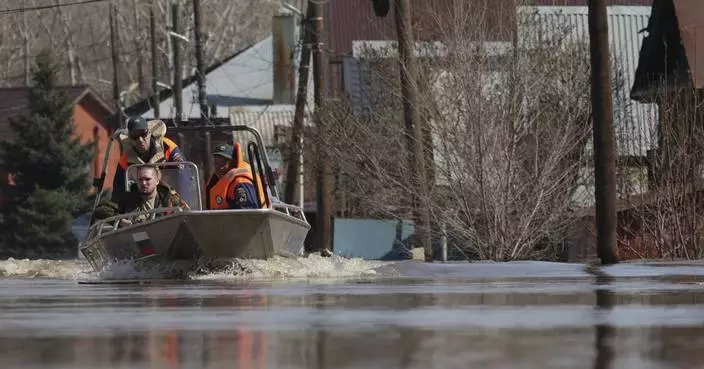A suicide car bombing on Sunday killed at least 13 people and wounded around 120 others in Afghanistan's western Ghor province, officials said.
The head of a hospital in Ghor, Mohammad Omer Lalzad, said emergency staff were treating dozens of people with both serious and light injuries from the bombing. He expected the death toll to rise.
Interior Ministry spokesman Tariq Aran said the car bombing struck near the entrance of the provincial police chief's office and other nearby government buildings in the area.
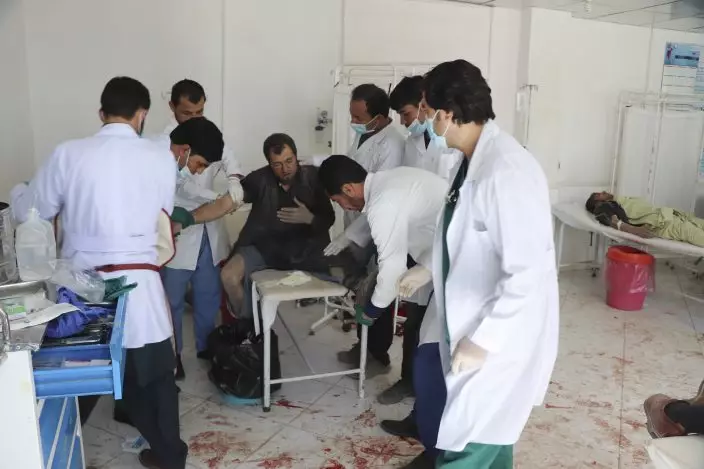
An Afghan receives a treatment at a hospital after a suicide car bombing in Ghor province western of Kabul, Afghanistan, Sunday, Oct. 18. 2020. A suicide car bombing on Sunday killed at least 1a dozen people and wounded more than 100 others in Afghanistan is western Ghor province officials said. (AP Photo)
No one immediately claimed responsibility for the attack in Ghor, which comes amid an uptick in attacks by the Taliban as representatives of the group and Afghan government officials hold their first-ever face-to-face talks in Qatar, where the Taliban have had a political office for many years. The negotiations are meant to end decades of war. in Afghanistan.
Arif Aber, spokesman for the provincial governor in Ghor, said the blast was so strong that its sound could heard across Feroz Koh, the capital city of the province.
“It damaged and partially destroyed a few government buildings, including the police chief's office, the women's affairs department and the provincial office for refugees,” Aber said.
On Friday, the Taliban agreed to suspend attacks in southern Afghanistan, which displaced thousands of residents in recent days. That came after the U.S. vowed to halt all airstrikes and night raids in keeping with the peace agreement the U.S. signed with the Taliban in February.
The U.S. had been conducting airstrikes in support of Afghan forces trying to repel Taliban assaults in Helmand province, which threatened to derail the efforts to end Afghanistan’s war.
The peace talks in Qatar between the Taliban and Afghan government negotiators began in September, but after a ceremonious start became bogged down, mainly in the minutiae of Islamic jurisprudence.
While successful negotiations are seen as critical to ending the fighting, the withdrawal of American troops relies on the Taliban honoring their commitments from the February accord to not support terror groups and fight all militants, most specifically the region’s Islamic State affiliate.
WASHINGTON (AP) — The suicide bombing at the Kabul airport that killed U.S. troops and Afghans in August 2021 was not preventable, and the “bald man in black” spotted by U.S. service members the morning of the attack was not the bomber, according to a new review by U.S. Central Command.
The findings, released Monday, refute assertions by some service members who believed they had a chance to take out the would-be bomber but did not get approval. And, for the first time, the U.S. military is confirming that the bomber was Abdul Rahman al-Logari, an Islamic State militant who had been in an Afghan prison but was released by the Taliban as the group took control of the country that summer.
The Abbey Gate bombing during the final chaotic days of the Afghanistan withdrawal killed 13 U.S. service members and 170 Afghans, and wounded scores more. It triggered widespread debate and congressional criticism, fueled by emotional testimony from a Marine injured in the blast, who said snipers believe they saw the possible bomber but couldn't get approval to take him out.
Former Marine Sgt. Tyler Vargas-Andrews told the House Foreign Affairs Committee last March that Marines and others aiding in the evacuation were given descriptions of men believed to be plotting an attack. Vargas-Andrews, who was injured in the blast but not interviewed in the initial investigation, said he and others saw a man matching the description and might have been able to stop the attack, but requests to take action were denied.
In a detailed briefing to a small number of reporters, members of the team that did the review released photos of the bald man identified by military snipers as a potential threat and compared it with photos of al-Logari. The team members, who spoke to reporters on condition of anonymity to provide details not yet made public, described facial recognition and other analysis they used that they said confirmed those were not the same man.
“For the past two years, some service members have claimed that they had the bomber in their sights and they could have prevented the attack. We now know that is not correct,” said a team member.
They said they also showed the photo of the bald man to service members during the latest interviews, and that the troops again confirmed that was the suspicious man they had targeted.
The review notes that the bald man was first seen around 7 a.m. and that troops lost sight of him by 10 a.m. The bombing was more than seven hours later, and the U.S. says al-Logari didn't get to Abbey Gate until “very shortly” before the blast took place. They declined to be more specific about the timing, saying details are classified.
Family members of those killed in the blast received similar briefings over the past two weekends and some are still unconvinced.
“For me, personally, we are still not clear. I believe Tyler saw what Tyler saw and he knows what he saw. And it was not the guy that they were claiming was the man in black,” Jim McCollum, the father of Marine Lance Cpl. Rylee McCollum, told The Associated Press.
He said the team went into “pretty good detail, not trying to discredit Tyler, but effectively saying he was wrong. However, that ended up being as clear as mud to us.”
And Mark Schmitz, the father of Marine Lance Cpl. Jared Schmitz, questioned the photo itself.
“They kept saying this is who Tyler Vargas-Andrews was looking at and we were thinking to ourselves, ‘well, that’s interesting. Why is this a picture of a picture from a Canon camera?’” he said. “To me it felt like they were trying to find the guy in those cameras that may have come close to looking like somebody of interest that they can try to sell to us.”
The families, however, also said they were relieved to get more details about their loved ones' deaths, saying the initial briefings were not as good.
Schmitz said that Army Gen. Eric Kurilla, head of U.S. Central Command, was part of the latest briefing and apologized for how the families were treated during the initial probe. This time around officials were able to share with Schmitz for the first time exactly where his son was when the bomb went off and that he was unconscious almost immediately, and therefore did not feel the impact of the shrapnel that went through his left torso, hitting a primary artery.
“That to me was, first and foremost, the best news I could have gotten,” Schmitz said. “That gave me a little bit of closure that my son didn’t suffer, which made me feel really good.”
Team members said they also are planning to speak with the troops who were interviewed this time, to share the results of the report.
They said the review also could not completely rule out claims that militants did a test run of the bombing several days earlier. But after reviewing photos and other intelligence, the team concluded it was unlikely that three men seen carrying a large bag — which troops deemed suspicious — were doing a trial run.
More broadly, the team said the review brought some new details to light, including more discussion about the possible bombing test run. But they said overall it confirmed the findings of U.S. Central Command's initial investigation into the bombing: that it was not preventable and that reports of threats prior to the bombing were too vague.
As an example, the new review noted that threat reports talked about a possible bomber with groomed hair, wearing loose clothes, and carrying a black bag. That description, the review said, could have matched anyone in the enormous crowd desperately trying to get into the airport.
The team said they conducted 52 interviews for the review — adding up to a total of 190 when the previous investigation is included. Service members were asked about 64 questions, and the sessions lasted between one hour and seven hours long.
A number of those questioned weren't included in the original investigation, many because they were severely wounded in the attack. The new review was ordered last September by Kurilla, largely due to criticism of the initial investigation and assertions that the deadly assault could have been stopped.
Members of the team said the Islamic State group put out the bomber's name on social media, but U.S. intelligence was later able to independently confirm that report.
U.S. Central Command’s initial investigation concluded in November 2021 that given the worsening security situation at the airport’s Abbey Gate as Afghans became increasingly desperate to flee, “ the attack was not preventable at the tactical level without degrading the mission to maximize the number of evacuees.”
Critics have slammed the Biden administration for the catastrophic evacuation, and they've complained that no one was held accountable for it. And while the U.S. was able to get more than 130,000 civilians out of the country during the panic after the Taliban took control of the government, there were horrifying images of desperate Afghans clinging to military aircraft as they lifted off.
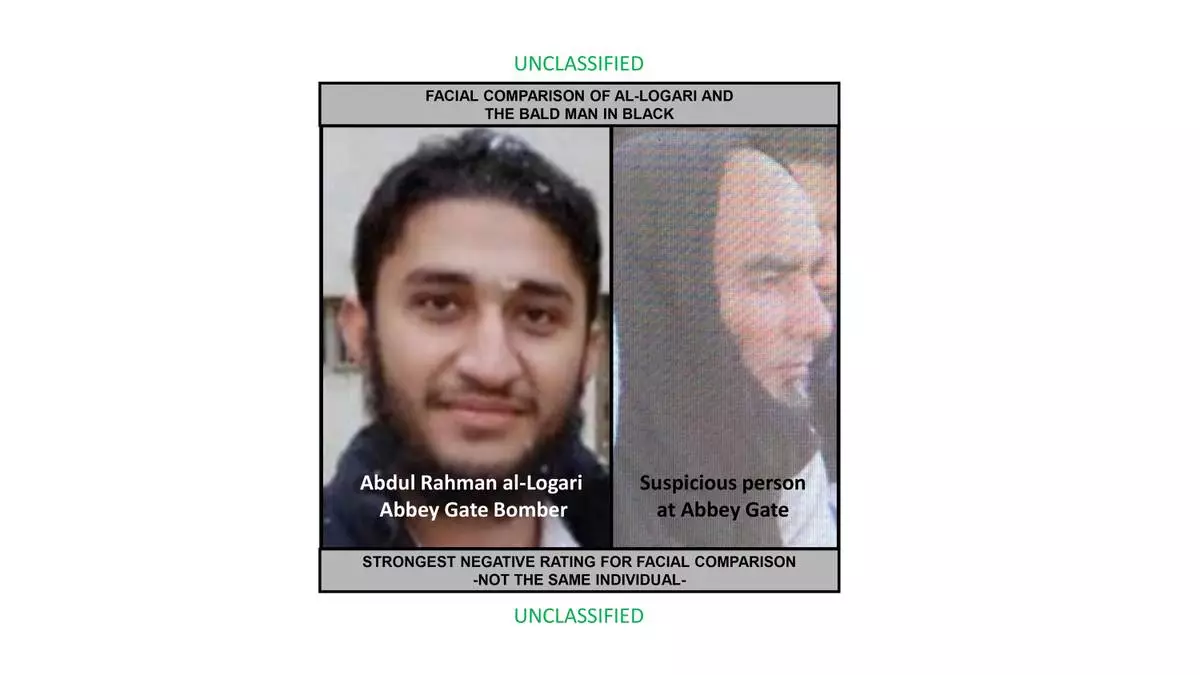
This combination photo shows a an image taken from a sniper team member's camera of the "bald man, in black" right, and a photo of the actual bomber, Islamic State militant Abdul Rahman al-Logari. A review released Monday, April 15, 2024, says the suicide bombing at the Kabul airport that killed U.S. troops and Afghans in August 2021 was not preventable, and the “bald man in black” spotted by U.S. service members the morning of the attack was not the bomber. (U.S. Central Command via AP)
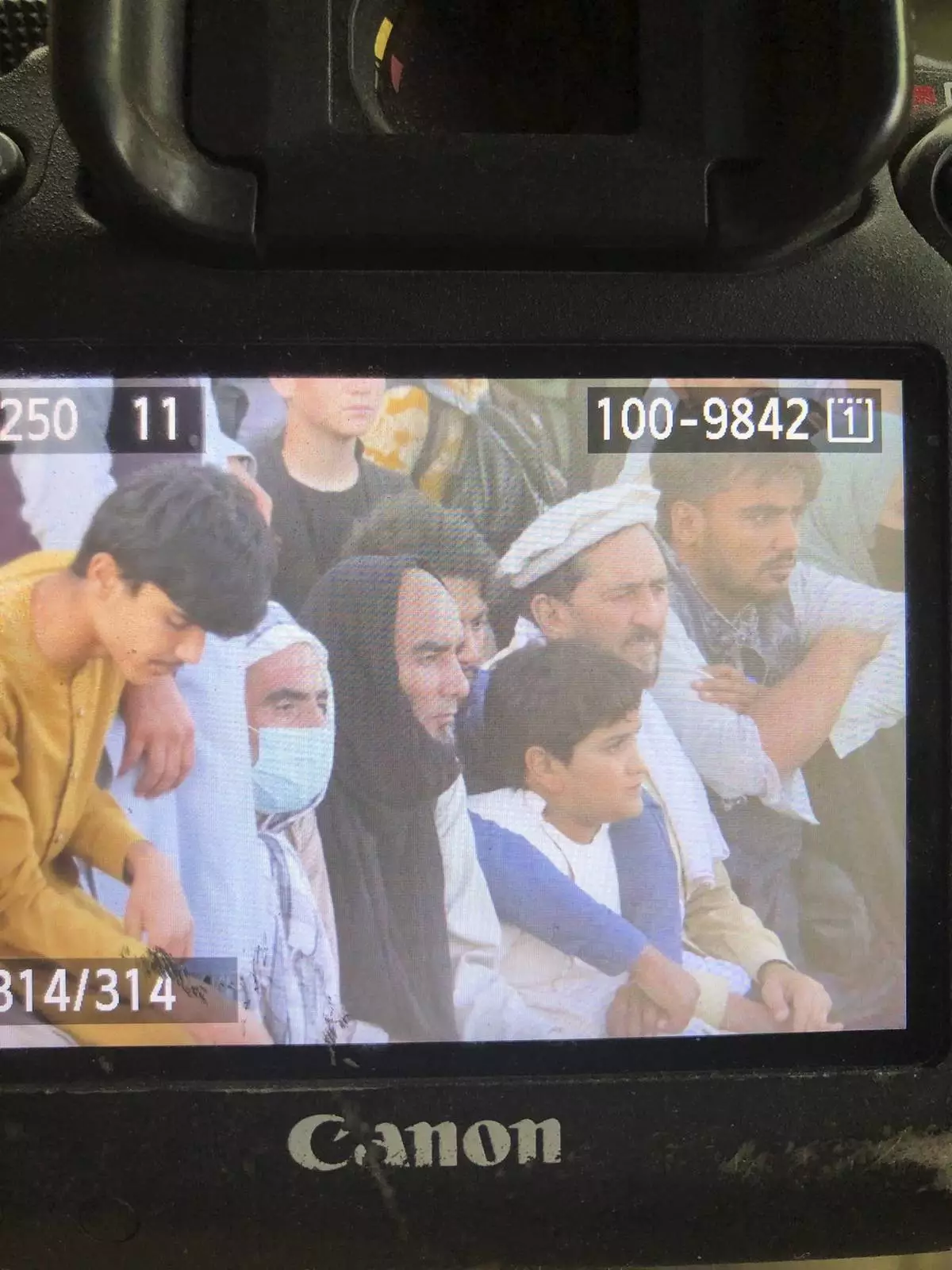
A digital display of a sniper team member's camera on August 26, 2021, shows the "bald man in black" that some service members believed was the would-be bomber. A review released Monday, April 15, 2024, says the suicide bombing at the Kabul airport that killed U.S. troops and Afghans in August 2021 was not preventable, and the “bald man in black” spotted by U.S. service members the morning of the attack was not the bomber. (U.S. Central Command via AP)
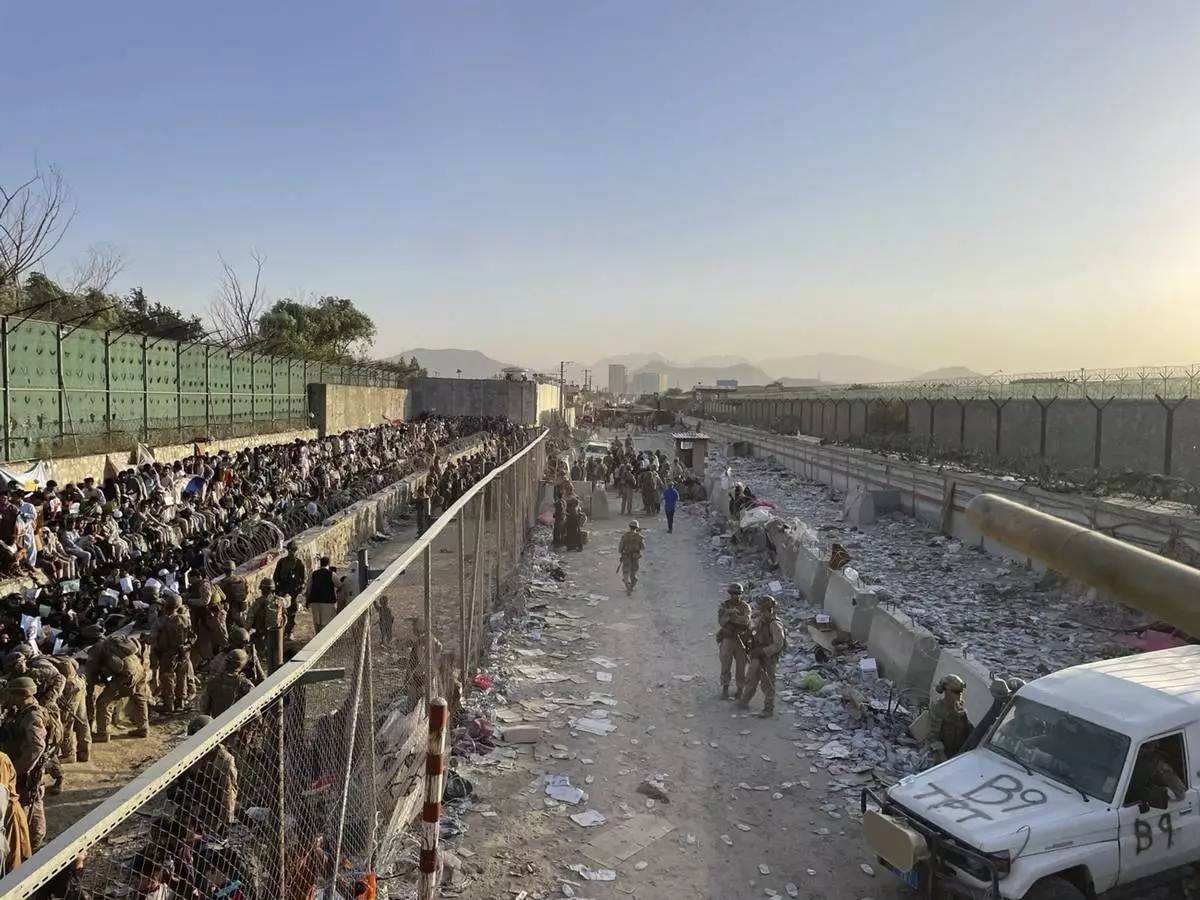
The bombing area at Abbey Gate is pictured August 26, 2021, in Kabul, Afghanistan, before the blast. A review released Monday, April 15, 2024, says the suicide bombing at the Kabul airport that killed U.S. troops and Afghans in August 2021 was not preventable, and the “bald man in black” spotted by U.S. service members the morning of the attack was not the bomber. (U.S. Central Command via AP)







